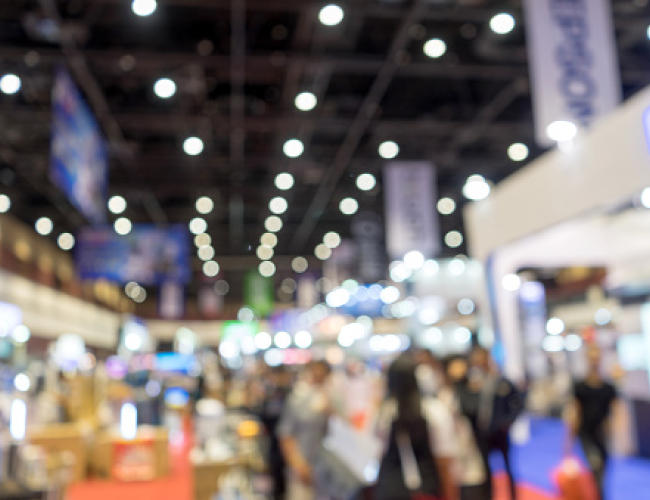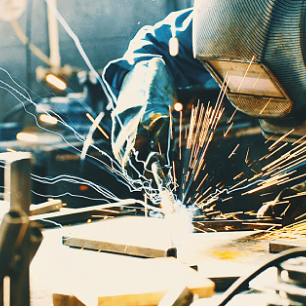Jump to:
Choosing the Right Water Chiller will Improve Your Resistance Welding Machine’s Process and Save Money
Long known as water hogs, resistance welding machines generate heat due to the high secondary welding amperages required for the process. Therefore, an adequate flow of cooling water is one of the process’s most important variables.
This is especially important when a resistance welding machine is part of a high-speed production line. Depending on the application, conventional alternating current (AC) resistance welding machines require a total of 4–8 gallons per minute (GPM) to stay cool.
Typically, a water manifold with several parallel circuits and individual flow controls is mounted on the machine. The ultimate setup uses a water flow switch with programmable limits to monitor temperature and flow.
At least one GPM should be directed to the welding machine control, one GPM to the transformer, and two GPM to the copper secondary loop and electrodes (tips). Even more water flow is required for resistance welding machines with modern midfrequency direct current (MFDC) technology, and it is important to follow the manufacturer’s nameplate recommendations.
Although AC resistance welding machines can tolerate some overheating due to inadequate water flow, MFDC power supplies will fail if not properly cooled.
When it comes to special design multigun resistance welding machines, the total water flow required can be substantial. For example, the water-cooling needs of an automated resistance welding machine with multiple transformers and individual electrode tips can easily total 10–20 GPM .
In the past, plant personnel routinely connected resistance welding machines to the incoming municipal water supply and never gave them another thought. However, the days of cheap and plentiful city water are long gone, and additional sewer charges can be substantial.
Numerous heat sources exist in the resistance welding process, starting with the welding transformer, which is typically located inside the machine frame where air does not circulate. Heat is generated internally as the transformer converts incoming line voltage into the high secondary amperage required for resistance welding.
Resistance welding applications can require as much as 100,000 secondary amps to generate enough localized heat to fuse metal through the resistance of the material at the joint.
Small-diameter copper water cooling tubes are typically built into the transformer’s internal windings while other circuits cool the high-voltage contactor section of the machine control and the secondary rectifiers used on direct current (DC) or MFDC power supplies.
In addition, the large copper conductors that complete the welding machine’s external secondary loop usually need to be water-cooled.
The final heat source in the resistance welding process, which can be the hardest to cool, comes from the copper electrode tips, which conduct the welding current to the part being welded.
Water Tubes
Most new electrode holders come with an internal water-cooling tube supplied by the manufacturer. With one end cut on a 45-deg angle (Photo 3), these tubes are designed to force water all the way to the end of the internal water-cooling cavity of a spot welding electrode.
Water tubes should be installed with 2–3 mm (0.078–0.118 in.) of space between the end of the 45-deg cut and the inside of the electrode. This ensures cool water is flushed correctly around the inside of the electrode before flowing back out.
Unfortunately, the importance of water tubes is not always recognized, and they often get thrown away. Missing or incorrectly cut and installed water tubes will allow a pocket of steam to form inside the electrode, which prevents the cooling water from reaching the end cavity of the electrode tip where it is needed.
Common Water-Cooling Problems
Large roof-mounted water towers have long been the most common way to supply cooling water to spot welding machines, but they present a unique set of problems, including inconsistent process water temperatures due to varying ambient air temperatures. In addition, dirt and other contaminants in the tower can cause problems.
Another reason a cooling tower is not recommended for use with spot welding machines is that the tower’s water flow capacity is often not increased as additional water-cooled machinery is installed.
In addition, if black iron pipe is used to plumb the facility, internal corrosion can occur after a couple of years, and the resulting flakes of rust will clog the small-diameter internal water-cooling circuits.
Well water, which is often viewed as free, can cost a plant dearly because the minerals naturally present in well water eventually clog the welding machine’s water-cooling circuits. Well water may also be too cold and cause condensation.
Some plants use a large water tank or even a 55-gallon drum with a pump to recirculate cooling water. Bags of ice are sometimes dumped in during the day in an attempt to lower the water temperature. However, due to inconsistent water temperatures, neither of those options are recommended.
Finally, the small radiator-type water recirculators designed for use with arc welding machines are usually inadequate for cooling a resistance welding machine in a production line environment.
The Big Chill
A self-contained water chiller with a built-in reservoir tank and recirculating pump is the best way to supply cooling water to a resistance welding machine. And, if properly sized, a chiller can provide cooling water to more than one machine.
Condensation Kills Resistance Welding Machines
Although common sense would indicate that water chillers used with resistance welding machines should be run as cold as possible, condensation quickly becomes a problem during the summer if the chiller’s temperature is set below the prevailing dew point (the temperature at which water vapor condenses).
Since dew point temperatures above 70°F are common during the muggy summer months, chillers should be set above the dew point to avoid internal sweating of the machine’s transformer and other water-cooled components. Condensation will eventually cause a transformer to fail.
Also to be avoided are puddles of water on the floor around the machine resulting from condensation dripping off the electrodes and holders. Since the silicon-controlled rectifier (SCR) contactors or insulated gate bipolar transistors (IGBTs) inside a resistance welding machine’s control cabinet are typically water cooled, it’s common to see condensation there, too.
To solve the condensation problem, some chillers now include a feature called automatic dew point compensation, which removes the need to manually adjust the chiller’s water temperature set point during humid weather.
Go with the Flow
Proper water flow is often more important to the resistance welding process than water temperature. Most chiller suppliers can furnish a larger-capacity pump than standard to ensure adequate water flow for the application, so don’t skimp on that if needed. Also, where possible, plumb the system to minimize head pressure caused by running water lines overhead. Since pressure does not equal flow, an inline water flow meter is recommended.
The ideal setup is to connect a chiller to just one resistance welding machine or a group of similar machines located close together and run the water lines on the floor rather than overhead.
Chiller Sizing
Selecting the proper refrigeration and pump capacity of a chiller to serve resistance welding machines is not always an exact science, so it’s important to collaborate with an experienced dealer.
When sizing a large chiller serving several machines, a dual compressor system might be the way to go since it allows one side to shut down automatically when the chiller’s maximum capacity is not needed.
In addition, a properly sized reservoir tank acts as a thermal flywheel and helps prevent the chiller’s compressor from short cycling.
Regardless of the water recirculating system you have, water quality is an important variable. Even closed-loop chillers should be monitored to ensure correct water quality/chemistry.
Most chiller suppliers can help with water quality recommendations; some can supply drums of the proper glycol coolant mix. Never use automotive antifreeze.
No matter how thirsty your resistance welding machine is, a properly sized recirculating water chiller will improve your resistance welding process and save money.
This article was written by TOM SNOW (chair, T. J. Snow Co.) for the American Welding Society.


